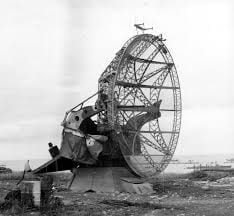Welcome back to my blog! If you’ve been keeping up with my blog then you probably knew that this post would be made soon as I mentioned in in last weeks post. If you haven’t then you might not know that I just finished my second podcast episode for my new and first ever podcast ‘What is it like Outside’.
Last episode I had the choice to talk about anyone who I believed was the greatest Canadian and for this episode we completely change the topic to WW2. At the start when we got introduced this theme I had no clue how I could possibly connect WW2 to outdoor sporting. As it turns out, there’s actually many ways they used bikes and skis (two best things in the world besides chocolate) in WW2. Or so I’ve been told by Owen and Tom through their podcasts. Unlike them, I chose a completely different approach to connecting the two subjects and I focused on the broader spectrum of it. My first idea was not this at all and I tried to connect the aluminum on the planes they used to what we use for aluminum mountain bikes. Yes, it didn’t really connect at all and that is why I did not use that topic. Although having that thought in mind really helped me figure out a way to find a better connection and using the same idea of evolving technology, I was able to connect radar in the war with what we use radar as today. As it turns out, my great grandfather was actually a radar technician in WW2. So after hearing that I knew exactly what my topic was going to be for this podcast episode.
Driving question:
How might we use stories to understand the causes and consequences of WWII?
If you take a listen to my podcast below, try to see if you can see my answer to this driving question. If it isn’t immediately clear after listening, please leave a comment letting me know or a comment with any feedback as this was the main objective for this episode.
This project has been quite the rollercoaster for me but in the end I am happy with how my podcast turned out and I feel I learned a lot about WW2 in general. Now I know how big of an impact radar actually had on the war and after hearing about its role in the Attack on Pearl Harbour it really helped me better understand how substantial it was in the war.
Another thing which better helped me visualize what it was like in the war was reading about Gwyn’s autobiography.
This was written by Gwyn and in my podcast, Christine Owen (my Nana and storyteller in this podcast episode) tells the story by using some information from this autobiography. Although the part I found interesting was what she didn’t touch up on just gave me even more information as to what it was like in his shoes.
Circular competencies:
Global collaborator – How might I use technology to connect to the world?
By doing my research and contacting potential interviewees I feel as if this competency is the easiest to show an example of as I’ve been doing so throughout the whole project.
Responding to text – Have I constructed an original connection between myself, the text, and the world?
With all the research I did to complete this podcast episode I feel as if I did this well. By telling my story in a way I feel is engaging and the parts of the interview I included does a great job at making the audience feel as if they’re experiencing what it was like in the war.
Using evidence and resources – Have I found diverse sources and evaluated them for their relevance, accuracy, and reliability?
By using information from multiple different reliable sources I was able to fact check everything and use the information I got from doing background reading on Gwyn and the battles he was apart of. A great example is his involvement in the attack on Pearl Harbour. In class we some research about this topic but as it was apart of my story I spent more time doing research on what Gwyn did specifically.
That’s all I have for this post but if you want to know anything else about Gwyn or my podcast please let me know as I have some more in which I can share about the two topics. Bye bye 👋







